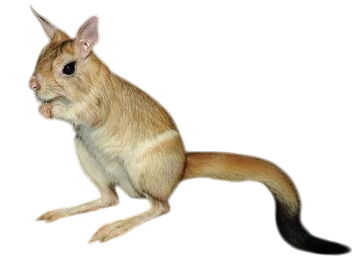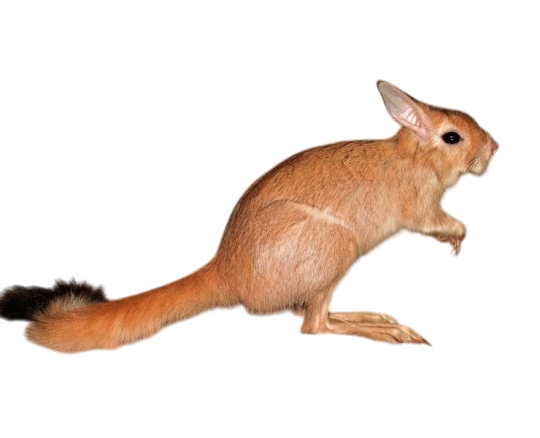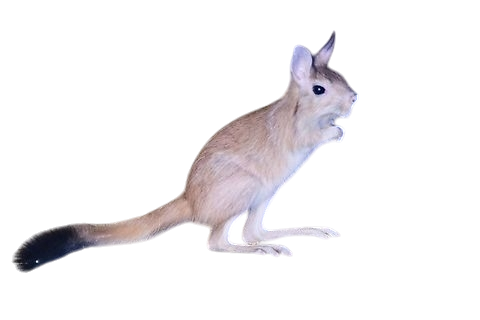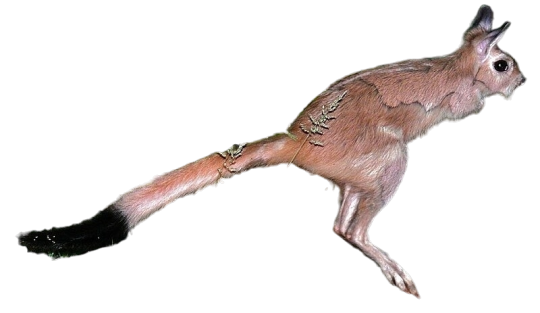#springhaas
Explore tagged Tumblr posts
Text
I realized I had an old folder full of sticker designs I never used, so posted them to redbubble! Added some rat ones.

3 notes
·
View notes
Text
Not springhare, springhaas! It's Afrikaans, not English.
651 notes
·
View notes
Text
Springhaas rotte - Uile of gif.
Forum: The 4x4 Pub Posted By: Uys Post Time: 2024/08/11 at 06:29 PM http://dlvr.it/TBnQ87
0 notes
Photo










Springhare
The South African springhare (Pedetes capensis), or springhaas in Afrikaans, is not actually a hare, but a rodent. It is one of two living species in the genus Pedetes, and is native to southern Africa. The East African springhare (Pedetes surdaster) was recognised by Matthee and Robinson in 1997 as a species distinct from the southern African springhare (P. capensis) based on genetic, morphological, and ethological differences. P. capensis from South Africa has fewer chromosomes (2n= 38) than does P. surdaster which has (2n = 40) and some other genetic variations. The East African springhare is found in central and southern Kenya and most of Tanzania.
These rodents are generally nocturnal and sleep through the day in burrows they dig. They feed on foliage, roots and other vegetable matter, and occasionally arthropods. Outside the burrow they usually move around by hopping on their hind legs.
The East African springhare resembles a small kangaroo and is about the size of a rabbit. It is mid-brown, has large erect ears, very short fore legs, and long powerful hind legs. It moves in bounds of up to 2 m (6.5 ft) and has a long tail fringed with black hairs which provides balance. It can sit up on its haunches like a squirrel. They have four toes on their hind feet with claws that look like small hooves; these are wider than those found on the fore feet.
Springhares breed throughout the year. The females give birth to a single young about three times a year. Unlike some other rodents, which have blind and hairless young, springhares are born furred, and are active within a very short time of birth. However, they are not weaned and do not leave the burrow until they are about half grown. This extended period of parental care helps to mitigate a birthrate that is, among rodents, remarkably low.
When only one springhare species was recognized, it was listed as vulnerable by the IUCN in 1996 due to an approximately 20% decrease in the population over the previous ten years. This has been caused by intense hunting and the loss of habitat. However, the negative trend has not persisted, and both species are now listed as Species of Least Concern.
907 notes
·
View notes
Photo

sketch comm for @thatonecripplekid
238 notes
·
View notes
Photo

Springhaas Baby Luckdragon
37 notes
·
View notes
Photo

Springhare @Zoo Berlin! Isn't it the cutest thing ever?!
©
30 notes
·
View notes
Text
springhare/springhaas
omfg look it up
it's a rodent native to africa
IT'S A GERBIL-SQUIRREL
4 notes
·
View notes
Photo

Springhaas
1 note
·
View note
Photo

Breaking out my Hawaiian shirt #spring #springhaas sprung
0 notes
Text
Random Animal Spotlight Time!
What better way to start a blog than Random Animal Spotlight Time? I don't know...that's why we're doing it. Our first lucky animal is the Springhare, or Springhaas.
They're strange, kangaroo like, animals that live in Africa. They are nocturnal rodents, and have some super cool adaptations like their big eyes for seeing at night, long tail for balance, and large feet to help them jump.
Personal fun fact, when they're angry they'll grunt and stomp their feet. You learn this when you wake them up at 9 am to clean their stall.
0 notes




